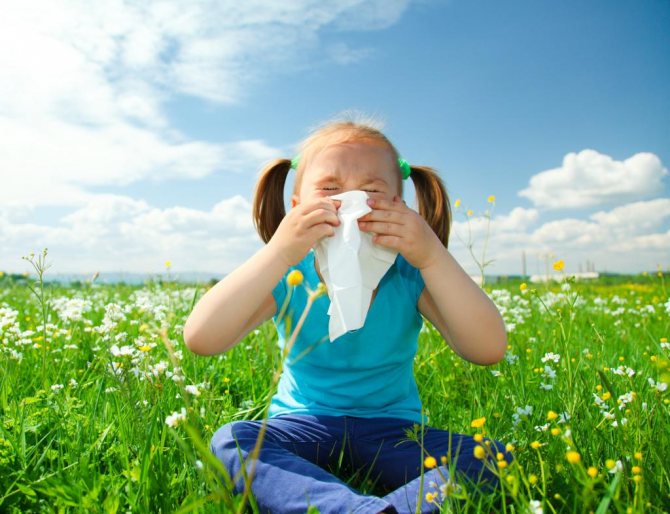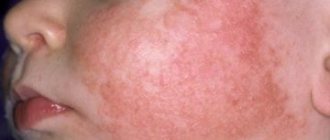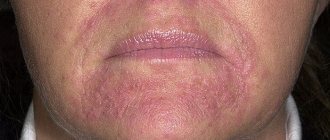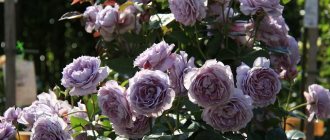- May 27, 2019
- Treatment methods
- Natali Michaelis
Scientists and doctors say that allergies are rapidly gaining momentum nowadays. There can be many reasons for this: environmental conditions, poor food quality and much more. Statistics show that recently the number of children who suffer from one type of allergy or another has increased by a quarter. This figure is approximate, since it is impossible to accurately calculate the number of patients. This is due to the fact that many adults, as well as their children, are treated for allergies with various home recipes. But is treating a child’s allergies with folk remedies justified? Will these home remedies harm children? We will talk about this and much more in this article.
General information about allergies
Allergy is a very complex immunopathological process in which special antibodies are produced to the effect of a foreign protein. Such a foreign protein is usually called an antigen, but in the medical field it is often also called an allergen.
During the reaction at the cellular level, upon initial contact with the antigen, a huge amount of secretion begins to be released. Upon repeated contact with the antigen, the human body immediately begins to react with an immune response. The body begins to release inflammatory mediators, for example, prostaglandins, histamine and others. They stimulate the production of mucus, irritate the receptors, which causes allergic rhinitis, lacrimation, conjunctivitis, and many other unpleasant symptoms.
The tendency to have an allergic reaction can also be inherited, for example, if dad or mom had allergies, then the child will become allergic with a 40% chance. If both parents had allergies, then the risk in this case increases to 80%. But if the parents were healthy and never complained of an allergic reaction, then there is still a chance that the child will be born with a predisposition to allergies. The probability in this case will be about 15%.
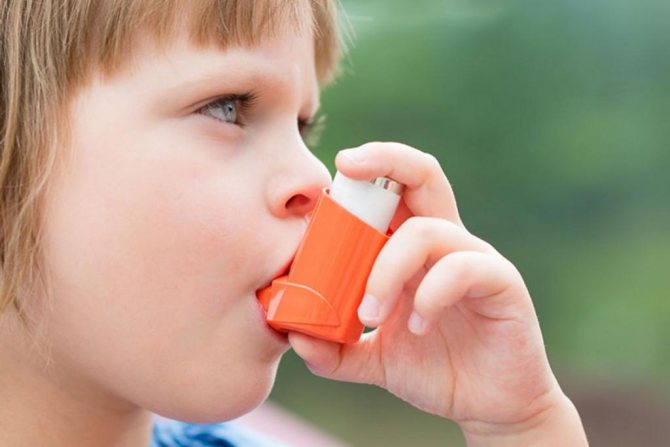
Causes of the disease
The allergenic activity of house dust is mainly due to the household mites it contains.
These are microscopic (0.3 mm), invisible to the naked eye, arthropods that live in bedding, old furniture, old books, carpets, etc. Allergies are caused by both living individuals and their scales.
The allergen is microscopic mites that live in the body of every person, the air is saturated with particles of dead scales, pollen, and waste products of these small microorganisms. Up to 2 million individuals of this allergen can live in one mattress, and therefore only timely and regular cleaning can be the key to the excellent well-being of an allergy sufferer.
Timely and regular cleaning can be the key to excellent well-being for allergy sufferers.
Deterioration may appear after repairs to neighbors; a person simply walked past their door, and has already become a hostage to his hereditary predisposition. If an allergy to construction dust occurs, the symptoms will not take long to appear: a gusty dry cough begins to torment, tearing and profuse discharge from the nose of a transparent color appear.
Book dust
House dust needs to be gotten rid of!
One book from the library shelf can cause allergies. It would be appropriate for such people to read electronic formats so as not to worsen their well-being. If you are allergic to book dust, the symptoms may be similar to a regular allergy: runny nose, sneezing, watery eyes.
It appears during the flowering period of various plants: acacia, birch, poplar, or ragweed. The causative agent is plant pollen. If not treated in a timely manner, an ulcer may develop, with negative consequences for the body as a whole.
House dust
Cleaning the house, shaking carpets, wiping dust, using a vacuum cleaner - all this promises the occurrence of allergic manifestations. This is due to the fact that there are mites in house dust, to which an allergy occurs. If you don’t know what to do to avoid allergies to house dust and mites, then for prevention purposes you need to:
- regularly carry out wet cleaning;
- ventilate the room;
- rinse your nose with saline solution;
- Clean soft toys and carpets outside the home.
Now you know how dust allergies manifest themselves and you can safely begin treating the disease at home.
All medications are aimed at reducing allergy symptoms and suppressing the processes in the body that lead to these symptoms. But she herself
This is a dust allergy treatment that relieves symptoms for several years.
Microscopic doses of the allergen are introduced into the body. Gradually, the dose increases - the body gradually “gets used” to the foreign substance.
After a full course of ASIT, a sharp weakening of symptoms or their complete absence for a long time may be observed.
ASIT is carried out only in the allergy department under the strict supervision of specialists.
At any time of administration, an allergic reaction may develop - then therapy is stopped and resumed after a few months.
The most common cause of allergic bronchial asthma and year-round allergic rhinitis is an allergy to house dust. This form of allergy has many similar names:
- for house dust;
- for house dust mites;
- for household dust;
- for library (book) dust, etc.
House dust is a natural product of human life. House dust extracts have high allergenic activity. They are heterogeneous in their composition, because contain both inorganic and organic compounds of animal, plant, microbial and fungal origin.
Allergens
The most common allergens are the following: pollen, dust, animal dander, molds. In addition, some medications can provoke an allergic reaction, for example, penicillin antibiotics, local anesthetic painkillers. Food allergic reactions often occur to seafood, nuts, milk, eggs, honey and citrus fruits.
As for insects, bees and wasps can cause similar symptoms. Moreover, it is not the individuals themselves that are dangerous, but their bites.
A child's allergic reaction is often associated with exposure to household chemicals, washing powder, detergent, especially if it contains chlorine. There are also rare cases of individual allergic reactions in people, for example, to sunlight, snow and much more.
Which doctor treats allergies?
Successful treatment of this disease requires an individual approach. As soon as the patient notices the first specific symptoms indicating a possible allergy, it is immediately necessary to visit doctors such as:
Consultation with a physician is necessary to rule out the possibility of a cold or acute respiratory viral infection. An allergist will make a more accurate diagnosis of the disease. During the initial examination, the specialist will definitely conduct a preliminary conversation in order to identify a genetic predisposition to the disease. He will also find out the time of appearance of the first signs and clarify the frequency of their occurrence. The specialist will determine the specific dust component that provokes the allergic reaction. You will need to submit:

- immunological blood test;
- allergy tests (both skin and intradermal);
- swab of the nasal mucosa.
After a diagnosis of dust allergy has been made, the treatment approach is determined by an allergist. Self-medication, as everyone knows, does not give effective results, and is often very dangerous. The doctor also prescribes a set of preventive measures that must be strictly adhered to in the future.
Symptoms
External manifestations of an allergic reaction are very bright, noticeable and characteristic. As a rule, a child develops a rash on the face and body, and in the event of food ingestion of the antigen, signs of an allergic reaction form on the elbows, in the abdomen and groin, a runny nose, cough, and inflammation of the mucous membrane in the eyes appear. In the most severe cases, the child may experience bronchospasm, shortness of breath, and wheezing. Rarely do specialists notice indigestion and stool upset. In most cases, an allergic reaction is accompanied by a runny nose.
When can you use traditional methods?
You shouldn’t even think about treating allergies in a child with folk remedies if the symptoms begin to manifest themselves strongly. In these situations, specialists prescribe therapy for a small patient, during which small doses of antigen are administered, gradually increasing until the child’s body stops reacting to antibodies. Such therapy is carried out only under the supervision of a specialist. In other cases, treatment of allergies in a child with folk remedies can be carried out at home. However, it is still recommended to discuss such therapy with a specialist in advance to avoid unpleasant consequences.
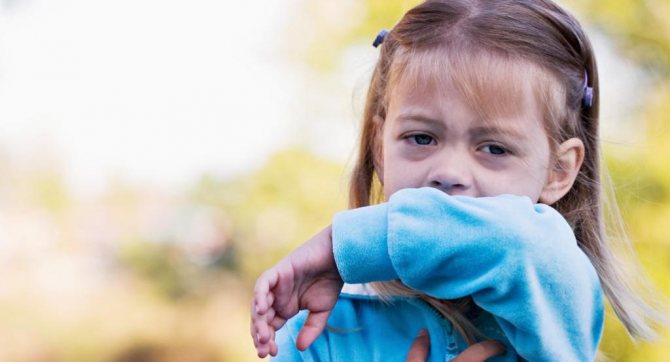
How to relieve itching

Allergies in adults can also cause itching. How to cope with an unpleasant symptom in this case? Homemade recipes are considered the safest, because synthetic medications, although they cope with the symptoms of the disease, can negatively affect the condition of the body as a whole.
The most effective folk recipes against itching are:
- Sea salt. Sold in all cosmetic stores and many pharmacies, it relieves itching perfectly. A small amount should be added to the bath.
- Raw potatoes. A gruel of grated vegetable is applied to the itchy areas.
- Apple cider vinegar and soda. These two components are mixed, then a cotton pad is moistened in the solution and applied to the painful area.
Folk remedies
An allergic reaction is not an acute disease that will always be chronic. This is why therapy is long-term and, in most cases, systematic. It is necessary to start by changing the living conditions that surround the child. Before starting to treat a child’s allergies with folk remedies, it is necessary to eliminate the allergen. First of all, you should remove pet hair if an allergic reaction occurs specifically to it. If a child is allergic to a certain product, then it should be excluded from the diet. If a rash begins to appear on the baby’s body or a runny nose appears in the spring, then it is necessary to use purifying filters that purify the air in the apartment.
If an allergy sufferer lives in the house, then quite often it is necessary to do wet cleaning, preventing dust from accumulating in the room. In addition, household chemicals must not contain chlorine, and children’s underwear must be washed using special children’s detergents.
As for traditional medicine recipes, they are relevant in order to reduce the manifestations of an allergic reaction. Conventionally, they are all divided into several types according to the method of their application:
- External. In case of skin manifestation of an allergic reaction, for example, urticaria, rash, atopic dermatitis, baths and lotions are made based on decoctions of medicinal herbs.
- Internal. Such infusions and decoctions are taken orally for symptoms associated with disruption of the gastrointestinal tract, nasally, and also in the eyes in case of allergic rhinitis or conjunctivitis. In addition, internal remedies can be used as a gargle solution.
Now it’s worth taking a closer look at the most effective compounds that can combat the symptoms of an allergic reaction.
How to relieve allergies at home: additional ways
- Honey. Experts say that if you start consuming honey produced in the region where you live a few months before the plants begin to bloom, you can adapt to allergens. You need to consume the product just a little bit at a time, gradually increasing the amount by 1 gram per week.
- Nera filters. Modern air purifiers are equipped with filters that destroy even the smallest dust particles.
- Some allergy symptoms, including nasal congestion, may improve after taking a hot shower. It alleviates the condition as it relieves swelling and helps with headaches.
- Steam. It works great for nasal congestion. To do this, you need to breathe it over a pan of hot water, you can also add a small amount of soda or salt there.
- Eucalyptus oil has antibacterial, anti-inflammatory and antiallergic effects. It can be added to a pan of hot water for inhalation or a few drops placed on a washcloth while showering.
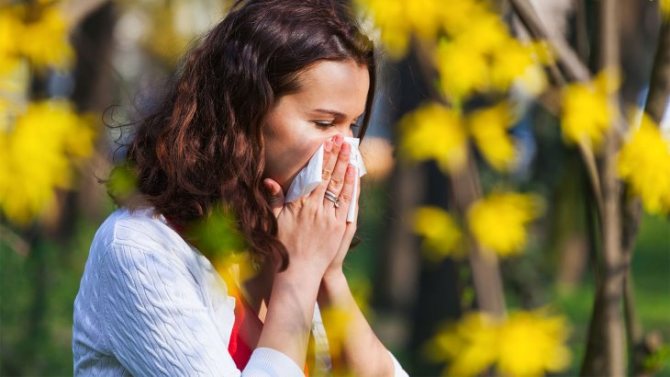
- Spicy foods are great for clearing the nose and all its sinuses. Various types of pepper, wasabi, mustard, garlic or horseradish added to dishes will help reduce mucus production due to the drying effect and help cleanse the sinuses of allergens that have entered them. It is worth noting that excessive consumption of spicy foods can cause irritation of the stomach, esophagus and oral mucosa.
- Closed windows will help avoid aggravation of allergies during the flowering period of plants, and will also save you from excess dust. This method is especially suitable for those who live on the lower floors. If the house has an air conditioner, then it must be set to indoor air circulation mode.
Chamomile decoction
Chamomile flowers can be used to make a decoction that can effectively combat itchy skin. For this, chamomile decoction is applied topically. However, such a remedy can also be used internally.
To prepare the medicinal composition, you need to brew one spoon of dried flowers in a glass of boiled and hot water. The mixture is brought to readiness in a water bath for a quarter of an hour. After this, the broth is cooled, filtered, and given to the baby in various dosages. For example, if a child is under 1 year old, then the decoction should be consumed 3 times a day, one teaspoon. Children aged 1 to 2 years are allowed to take 2 tablespoons 3 times a day. Children over 3 years old are allowed to drink 3 glasses 3 times a day. Children over 6 years old take half a glass of this product.
Also note that this herb for skin allergies in children is used to make baths. Such procedures can be performed on children from birth to 3 years. This decoction is also used as a local compress on problem areas of the skin.
Alternative medicine for allergic rashes in a baby
The most common type of rash in children is urticaria and dermatitis. It occurs as a result of the immune system fighting pathogenic substances. The most common among them are food and sunlight. Treatment of allergies in children with folk remedies involves the following measures:
| Mint | Pour boiling water over a few tablespoons of mint. Drink this tea throughout the day instead of plain tea. |
| Yarrow | The dried herb is poured with boiling water and left for an hour and a half. After straining it, give 80 grams three times a day. |
| Beet | Peel the beets and chop finely. Place it in a fairly deep bowl and fill it with two liters of cold water. Let it brew for about a week. Give your child one tablespoon per day. Can also be used for wiping as a lotion. |
| Celery | The child needs to drink fresh juice from this plant as often as possible to normalize the functioning of the gastrointestinal tract. It is an excellent diuretic that will help remove toxic elements from his body. |
| Potato | Peeled potatoes are finely chopped or grated and used as a compress. It must be applied to the location of the blisters for at least half an hour. |
To relieve skin manifestations of allergies, you can prepare ointments according to folk recipes. For one of them, you need to take rice starch and glycerin in equal proportions. Apply to your child's damaged skin before bed. Vaseline and aloe juice can also be used as ingredients. Powdered radish seeds relieve itching well. Place a few drops of water on them and apply as a compress.
A drink made from viburnum will help cleanse the body. And dill juice will relieve attacks of severe itching and burning of the skin in a child. Wipe your skin with brewed green tea bags. When bathing your baby, add decoctions of pine needles, lemon balm, mint or eucalyptus to the bath. In the case of an allergic rash, parents should closely monitor the baby so that he does not scratch the blisters, which will turn into wounds and scars. To do this, it is better to bandage the affected areas at night.
Nettle decoction
A product based on this plant is used to alleviate allergic reactions in children over 3 years of age. To prepare a nettle decoction, you need to take 3 tablespoons of the raw material, brew it with boiling water, and leave for 30 minutes. 100 ml of the finished medicinal product is used at a time.
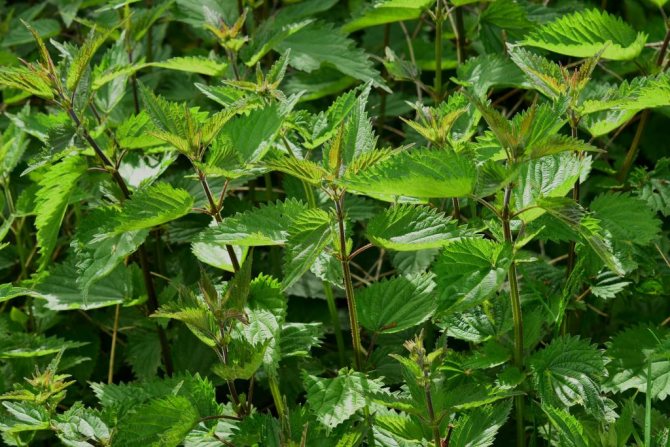
St. John's wort
So, we continue to consider what to give a child for allergies. A very effective remedy is the herb St. John's wort. This plant is used to make baths if a child has atopic dermatitis. In addition, the composition can be used as a gargle if the baby has a severe dry allergic cough.
To prepare a remedy, you need to take two tablespoons of this herb and mix it with the same amount of tansy or chamomile. Brew the herb with boiled water, then leave for about half an hour under a closed lid. Gargle every 2-3 hours.
Dandelion
This recipe helps to alleviate the baby’s condition if he has a food allergy. This is the best allergy remedy for children that can combat this problem. To prepare, you need to take a bunch of freshly picked dandelions (both leaves and flowers) and place them in a blender. After grinding, the pulp must be diluted with boiled chilled water in a ratio of 1:5. A single dosage is one tablespoon orally.
For example, if a child is allergic to a formula, then you can use this remedy for therapy.
Please note that the mixture tastes very bitter. If the child does not have an allergic reaction to sugar, then you can add a few pieces of refined sugar to the product.
Plants for skin allergies
In nature there are many different medicinal herbs that can fight allergic reactions that manifest themselves on the skin. But which herbs for skin allergies are the most effective for children?
Reviews say that the sequence is considered the most effective. To prepare the healing composition, you need to pour a tablespoon of this raw material into two glasses of water. Let it brew for 2 hours. This product can be used instead of tea, and also as a bath.
For a one-year-old child, you can make a dill-based remedy for facial allergies. To prepare, you need to take a teaspoon of this herb and brew 300 ml of boiling water. Leave for 1 hour. The product is used daily, divided into 3 doses.
What else can I put on my child for allergies? You can make a decoction of licorice as a compress. To do this, linen fabric is soaked in the decoction and applied to the problem area where the rash appears. This compress is used in cases of neurodermatitis and eczema.
Healing baths
In order to relieve skin manifestations of pollen allergies, use baths with the addition of herbs and various decoctions. So, 2 hours before taking water treatments, brew and infuse oatmeal in a thermal container. After straining, pour the liquid into warm water. This will help relieve irritation from the skin. Herbs such as celandine, chamomile, lavender, and string help greatly. Use the following recipe: take equal amounts of string, chamomile flowers, valerian and St. John's wort. Take this mixture in quantity, calculating 5 spoons per 10 liters of water. Pour the required amount of herb with water and boil for several minutes. Let the broth sit, cool down, and add it to the bath.
Willow branches cope with skin manifestations of pollen allergies. In the morning you will need to boil several liters of water and add about 400 grams of small twigs to it. Leave this broth until the evening, covered with a lid. After a hard day at work, take a bath with the broth.
It will be useful to use different needles. If it is not possible to get natural coniferous branches, use essential oils of fir, spruce, eucalyptus or lemon balm. They will not only relieve itching and burning from skin rashes due to allergies, but also by inhaling the vapors of these oils, the upper respiratory tract will be perfectly cleared. Add plain table salt (300-500 grams) to the water. It is important here that the salt dissolves completely, as salt crystals can scratch the body.
Flax, or rather its seeds, is a great help for pollen allergies. 100 grams of these seeds must be brewed in boiling water. You can boil it for about 10 minutes. Then pour it into a common bath. This will remove visible skin manifestations of the disease. A bath with pre-dissolved starch (500 g) will help get rid of severe itching of the skin and cool it, which will relieve inflammation.
Egg shells
An effective remedy for allergies in children is eggshells. But how to use it correctly? There are two recipes for preparing a healing remedy.
The first involves the use of boiled eggs. In this case, the opinions of experts will differ. Many people say that eggs should not be cooked, otherwise they will lose all their beneficial properties.
Another recipe calls for raw eggs. Most patients use this type of allergy treatment option. The product in this case has higher medicinal properties than in its processed form.
If you need to prepare the powder according to the first recipe, you should hard-boil an egg and peel its shell. Then the film is removed and the shell is dried. You should pay attention to the fact that drying is not carried out on the stove, but in the sun. Next, the shell is crushed to a powder state. Add a few drops of lemon juice to the finished mixture until it reaches a mushy state.
The dosage of the product used will depend on the age of the child. Children under 6 months are allowed to consume 1-2 grams per day. Children aged from 6 months to 1 year can be given a sixth of the resulting amount of powder from one egg.

Children aged 1-2 years are given 2-4 g of this product. At 7 years of age, the dosage increases to half a teaspoon.
How is “household allergy” treated in adults and children?
Allergy is characterized by increased sensitivity to an external irritant.
More than 20% of the world's population suffers from this problem; allergy symptoms can occur in adults and children. The syndrome of allergen action on the body can be expressed by many signs. Rhinitis is an allergy to dust. Symptoms of an allergen are as follows:
- large or small rashes;
- redness of the face, arms, legs, abdomen, and sometimes the back;
- nasal congestion, runny nose, frequent sneezing;
- pain in the eyes, swelling of the eyelids, conjunctivitis.
Schoolchildren and even infants may be susceptible to allergies to household dust. A peculiarity of symptoms in infants is that they are disguised as a viral infection.
Often a child receives useless treatment for a cold for a long time.
When preventing dust allergy symptoms in children, you should follow the same principles as for adults.
Additionally, we can advise:
- remove soft toys from the room where the baby sleeps, and preferably from the apartment in general;
- if you have a particularly favorite plush bunny, then it should be washed regularly and treated against household mites, and should not be slept with the child, but in a separate house - in the closet;
- All medications should be strictly dosed in accordance with the doctor’s recommendation.
The house needs to be wet cleaned more often and the rooms need to be ventilated.
When washing floors, you should add special additives to the water to get rid of mites.
House dust allergy symptoms will decrease if:
- Remove feather pillows from the house;
- Replace fabric curtains with blinds;
- Give preference to inflatable or water mattresses;
- Remove all carpets.
In case of allergies to paper dust, it is recommended to store all books and documents on closed shelves.
It is important to clean books from time to time with a vacuum cleaner and treat them with special anti-parasite products.
When working with other types of dust, it is recommended to wear a respirator or mask to protect the respiratory tract. It is worth noting that the risk of an allergic reaction is greater in those people who have weakened immune systems.
Dust mites are the main causative agent of allergies and the very component of dust that cannot be completely eliminated. With a size of 0.1-0.3 mm, these microorganisms concentrate on bedding, pillows and mattresses. One gram of mattress dust can contain from 200 to 15,000 of these mites.
Feeding on dead human cells, over ten years of use of the mattress they will make up half of its contents. However, they do not pose a danger from bites or transmission of diseases. The causative agent of an allergic reaction is their waste products. In total, there are more than 150 species, but only two of them provoke allergies - Dermatophagoides and Dermatophagoides pteronyssinus.
It is impossible to get rid of dust mites with a vacuum cleaner; they do not die at low temperatures. Penetrating deep into furniture, pillows and mattresses, they even survive thorough washing.
But there are a number of methods that will help reduce their number:
- Regular washing of bed linen, every 10-15 days in hot water (60° Celsius) with special powders, Acaricide.
- It is better to dry clean pillows and mattresses or leave them in the sun for the whole day.
- Ultrasonic repellers are lethal to ticks and absolutely safe for humans.
Despite the danger for allergy sufferers, dust mites are partly useful - they are the orderlies of our home, destroying dead skin particles.
How to treat allergies if you cannot consult a doctor?
- Rhinitis. Rinsing your nose with warm salt water will help get rid of allergic rhinitis. This procedure will remove microscopic particles of household dust from the nasal passages. You can use a special syringe designed for rinsing the nose, or simply draw salt water into the nasal cavity from the palm of your hand.
- Conjunctivitis. If this ailment does not cause severe discomfort and acute pain, you can try using iced tea for treatment - you can wash your eyes with it or apply cotton pads soaked in tea to your eyes. If the allergy symptom becomes severe, you need to use antibacterial eye drops.
- Rash. The first thing you need to remember when you have a rash on your body is that you shouldn’t scratch problem areas of the skin, this will only worsen the symptom of a dust allergy, and besides, it’s so easy to get an infection into an open wound. You can alleviate the condition by taking a cold shower - this will soothe the skin if you don’t have the right medicine at hand at the right time.
- Cough and asthma. This symptom should pay special attention due to its danger to the patient’s health. Coughing occurs due to bronchospasm, which can lead to suffocation. Therefore, in the case of such a condition, the patient must be seated and reassured, because a high level of stress can catalyze a negative state. After stopping the patient’s contact with the allergen, you need to ventilate the room, provide access to fresh air and be sure to give an antihistamine. If the measures taken do not help and the condition worsens, immediately call an ambulance.
Allergy to crustaceans (shrimp, crayfish, crabs, etc..)
Nutrition and supplements
Allergy sufferers are advised to eat foods low in allergens. These are:
- dairy products;
- dried fruits;
- bread;
- chicken meat;
- cod liver and perch meat;
- greens and vegetables;
- porridge – oatmeal, rice, pearl barley.
Dangerous products are those in which the content of allergens is considered high:
- exotic fruits and citrus fruits;
- fresh cow's milk;
- nuts, honey;
- smoked meats, chewing gum, sparkling water.
Here is one of the recipes that perfectly helps adults who are allergic to household dust, relieving symptoms for a long time.
You will need burdock root (50 grams) and dandelion. The ingredients need to be poured with warm water (about 500 ml) and allowed to brew for ten hours. Then boil the resulting infusion and let it cool. Drink half 0.5 cup before meals for two months.
An allergy to house dust in a child is best treated with yarrow tincture. You need to take 40 grams of herb (the plant must be dried) and pour 250 ml of hot water, then leave for 0.5 hours. Use the resulting product in 50 ml doses. several times a day before meals. When taken regularly, the tincture will help relieve allergic symptoms in children.
- Respiratory dysfunction: nasal congestion, asthma attacks
- Lack of sense of smell, impaired sense of taste
- Cross food allergy to seafood
- Possible development of polyposis of the nose and paranasal sinuses
- The need for regular cleaning of the living space
- Mandatory use of special bedding and interior items
- With long-term symptomatic therapy, its side effects appear
- The use of the classical ASIT method is difficult in case of polyvalent (multiple) allergies.
“Autolymphocytotherapy” (abbreviated as ALT) has been widely used in the treatment of patients with various forms of allergic diseases for more than 20 years; the method was first patented in 1992.
ALT has been successfully used in the treatment of dust allergies in adults and children. For children, treatment with the Autolymphocytotherapy method is carried out after 5 years of age.
The method of “Autolymphocytotherapy”, in addition to the treatment of “house dust allergies”, is widely used for: atopic dermatitis, urticaria, angioedema, food allergies, bronchial asthma, allergic rhinitis, hay fever, allergies to household allergens, to pets, allergies to cold and ultraviolet rays (photodermatitis).
The ALT method is successfully used for sensitivity to several allergens at the same time, for example:
- to dust and animal hair (allergy to cats, dogs, etc.);
- on dust and pollen of trees and plants;
- for dust and mold;
- and in other combinations.
The essence of the ALT method is to use one’s own immune cells – lymphocytes – to restore normal immune function and reduce the body’s sensitivity to various allergens.
Autolymphocytotherapy is carried out on an outpatient basis, in an allergology office as prescribed and under the supervision of an allergist-immunologist. Lymphocytes are isolated from a small amount of the patient's venous blood under sterile laboratory conditions.
The isolated lymphocytes are injected subcutaneously into the lateral surface of the shoulder. Before each procedure, the patient is examined in order to individually prescribe the dose of the administered autovaccine. Apart from its own lymphocytes and physiological solution, the autovaccine does not contain any drugs. Treatment regimens and the number and frequency of immune cells administered depend on the severity of the disease. Autolymphocytes are administered in gradually increasing doses with an interval between injections of 2 to 6 days. Course of treatment: 6-8 procedures.
- 1. – Taking 5 ml of blood.
- 2.– Isolation of autolymphocytes
- 3.– Examination by an allergist and determination of the autovaccine dose
- 4.– Subcutaneous injection of own lymphocytes
Normalization of the functions of the immune system and a decrease in the body's sensitivity to allergens occurs gradually. Cancellation of supportive symptomatic therapy is also carried out gradually under the supervision of an allergist. The patient is given the opportunity to have 3 free follow-up consultations within 6 months of observation after completing the course of treatment using the Autolymphocytotherapy method.
The effectiveness of treatment is determined by the individual characteristics of the immune system. This process to a certain extent depends on the patient’s compliance with the recommendations of the allergist during the period of treatment and rehabilitation.
Possible contraindications can be found here
specialist Send Get an answer to your question
- We treat the cause of the disease, not its symptoms
- Minimum contraindications
- No hospitalization or time away from work required
- The course of treatment is only 3-4 weeks
- 1 procedure takes only 1-2 hours
- Treatment is possible in the absence of persistent remissions
- Autolymphocytotherapy can be combined with any symptomatic treatment
- THE METHOD IS AUTHORIZED BY THE FEDERAL SERVICE FOR SUPERVISION IN THE FIELD OF HEALTHCARE
- Impaired breathing through the nose, congestion in one or both nostrils at once;
- Burning and itching in the nose;
- Attacks of sneezing and copious mucous discharge from the nose;
- Redness, itching of the mucous membrane of the eyes, lacrimation;
- Painful paroxysmal dry cough;
- Attacks of suffocation.
Vinegar and egg
Goat milk
This product can be called unique; it is very different from cow's milk. Goat milk not only has excellent taste, but also contains a large number of useful microelements, macroelements, and vitamins. Goat milk for allergies helps children achieve the following results:
- Get rid of the rash.
- Increase vigor and improve the general condition of the child’s body.
- Boost your immune system.
- Improve the functioning of the digestive system.
Treating an allergic reaction with this product is a very simple process. To do this, you just need to drink one glass of goat milk every morning and evening. However, this should be done slowly. Milk is drunk without haste, in small sips. For younger children, you can give a smaller portion.
What it is
An allergy is an acute reaction of the immune system that can occur due to exposure to any substance. Symptoms of the disease can appear in a couple of minutes or several days. Substances that provoke the development of the disease are called allergens.
Theoretically, an allergy can be caused by absolutely any substance, even drinking water. But most often it occurs due to mold, dust, peanuts, honey, pollen, milk and wool.
The prevalence of different types of the disease may vary in different countries or even cities. This is determined by the way of life, the habits of people and the state of the environment in a particular region. Pathology can develop at any age. If a person did not have an allergy in childhood or adulthood, this does not completely exclude the possibility of its occurrence in old age.
The dangers of treatment at home
It is not recommended to immediately treat an allergic reaction with folk remedies, since it will then be difficult to identify the true antigen. Smart parents first of all show their child to an allergist. The doctor must conduct a study, do skin tests, take blood to identify antibodies to the antigen. After this, the specialist gives recommendations on how to eliminate the source of the allergen.

With independent therapy, this diagnosis is impossible, and parents can only guess about the allergen that caused the child’s rash or cough.
Most alternative medicine recipes are based on medicinal plants, which can also be an allergen. Of course, self-therapy with such drugs can worsen your baby’s condition.
Help
How to relieve a runny nose with allergies? If you decide to use folk remedies, you must first make sure that they themselves do not provoke an allergic reaction. Then you can begin treatment:
- First you need to relieve swelling of the mucous membrane. To do this, you need to drip aloe juice or infusion of chamomile, calendula, or yarrow into your nose.
- Then, using a saline solution, you need to clear your sinuses. To do this, mix a spoonful of salt and 200 ml of water and rinse your nose so that the water poured into one nostril flows out of the other.
- The third stage is a barrier against microbes; for this, garlic is wrapped in cotton wool and placed in the nose for 15 minutes.
Tips and tricks
A child who suffers from an allergic reaction needs a lot of calcium. Therefore, it is recommended to give him crushed egg shells, as mentioned above.
In case of a food allergic reaction to some food products, for example, cow's milk, the allergen should be excluded from the diet during therapy. When the symptoms go away, the product is added to the diet, but in small dosages that gradually increase.
It is recommended to buy an air humidifier and place it in the room. The fact is that dry indoor air increases the risk of developing bronchial asthma.
If a child is allergic, it is recommended to rinse him in the shower after returning from the street. Then the baby should be changed into clean clothes to reduce the risk of bringing an additional dose of antigen from the street.
Parents should also carefully choose toys and clothes for their baby. Underwear should be purchased from natural fabrics, preferably white, without any dyes. Toys should be purchased only from trusted manufacturers.
Please note that the less a child sweats, the less symptoms of an allergic reaction he will experience. Therefore, the child should be dressed according to the weather and avoid excessive sweating.
